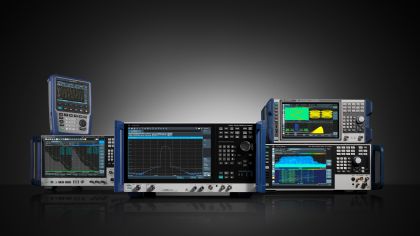The phase noise of a waveform means brief, rapid, fluctuations in the frequency, seen on a spectrum analyzer screen as blurring or judder of the waveform on the display. Phase noise spreads the power of a signal to adjacent frequencies, resulting in noise sidebands, weakening the useable signal power, and reducing signal quality. A weak signal can disappear into the phase noise of a strong adjacent signal.
Phase noise in the frequency domain corresponds to jitter in the time domain; a fluctuation in frequency is also a deviation of the edge of a signal in time.
The cause of phase noise (and jitter) is irregularities in the performance of the oscillator clocking the waveform.
An ideal oscillator would generate a pure sine wave; all the power of the signal is at a single frequency. However, all real oscillators have instabilities causing phase-modulated noise components. The phase noise components spread the power of a signal to adjacent frequencies. Oscillator phase noise often includes low frequency flicker noise and may include white noise. Phase noise describes the stability of an oscillator in the Frequency Domain, while jitter describes stability in the Time Domain.
Phase noise can be measured using a spectrum analyzer, so long as the phase noise of the device under test is large compared to the phase noise of the local oscillator in the spectrum analyzer's local oscillator.
The inherent phase noise of the spectrum analyzer will limit the ability to perform phase noise measurements and impacts error vector magnitude (EVM) measurements on digitally modulated signals, especially narrowband signals.
Some spectrum analyzers will offer optional higher accuracy oscillators at an additional cost to improve the sensitivity of phase noise measurements.







































